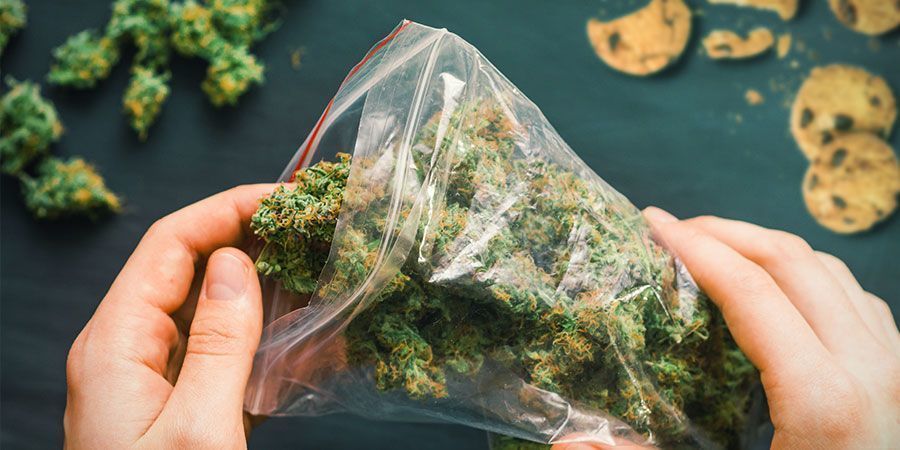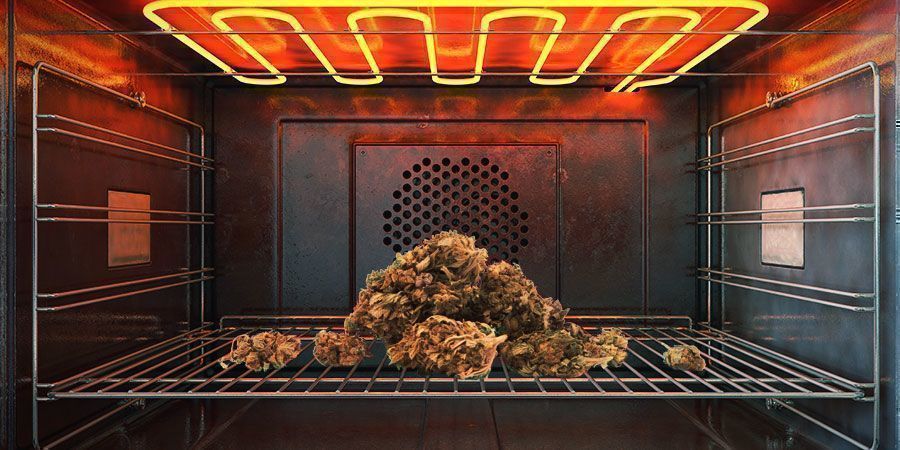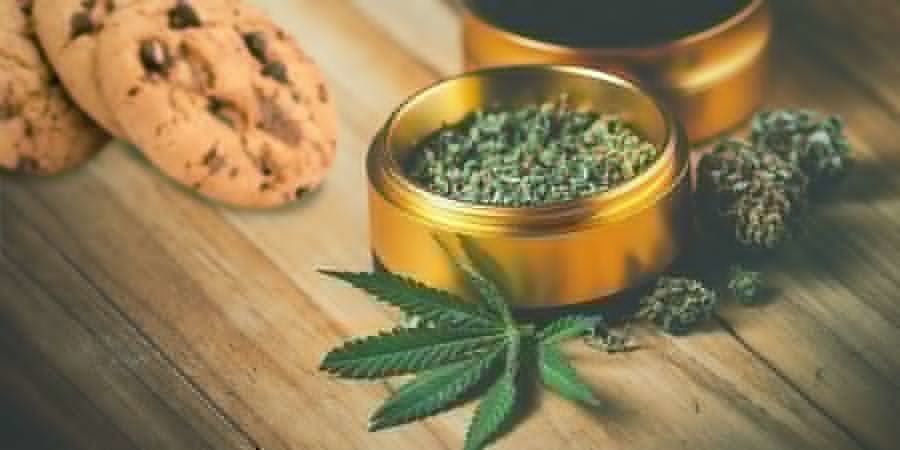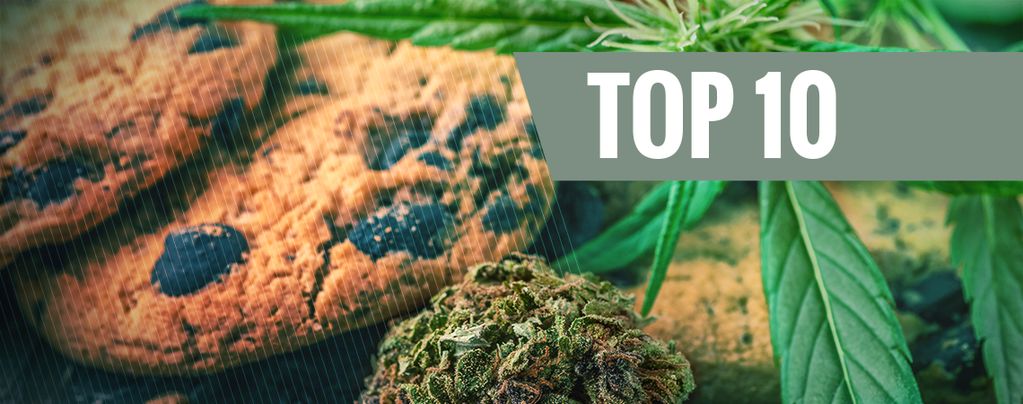
Top 10 Mistakes When Cooking With Cannabis (And How To Avoid Them)
Thinking of making your own cannabis edibles? It’s really not difficult. Then again, you need to be careful about how you go about the process. Find out the top mistakes people make when cooking with cannabis and how to avoid them!
Cannabis edibles have become quite popular. It makes sense, as they don’t come with the possible health risks from smoking, are discreet and easy to consume, and make for stronger and longer-lasting effects. What started as bhang, space cakes, firecrackers, and brownies has now evolved into a vast world of cannabis-infused goodness. Today, edibles run the gamut from sweet to savoury and feature in beverages and foods alike. With more and more people experimenting with cannabis, edibles make for a tasty and simple way to ingest THC and CBD.
Top 10 Mistakes When Cooking Cannabis Edibles
The good thing is, you don’t need to head to your dispensary to stock up on some “loaded” culinary goodness. You can cook with cannabis right at home. But let’s not get ahead of ourselves: Although cooking with weed isn’t difficult, mistakes can be made. Let’s take a look at the most common mistakes to avoid when cooking with cannabis, along with their solutions.
1. Using Way Too Much Cannabis
Cooking with cannabis isn’t just throwing a bunch of flower into a bit of butter and hoping it will turn out right. When making cannabutter, the fat can only bind to so much cannabis; throwing in too much isn't going to translate to better potency unless the ratios are right.
Going overboard with the amount of weed you use will also negatively affect the flavour. You don’t want your cookies to have an icky, grassy taste, do you? And, of course, the biggest issue with adding too much weed is that your edibles may turn out way stronger than you anticipated. This will make dosing more difficult in turn.
![]() Solution: Use balanced ingredient ratios (less is more!)
Solution: Use balanced ingredient ratios (less is more!)
As a rough guide for cooking with weed, use an equal ratio of fat to cannabis. If you’re just starting out as a canna-chef, know that less is more.
2. Forgetting To Decarboxylate Your Weed
Sprinkling some bud onto your food or throwing it into your blender won’t get you high. The reason for this is that weed first needs to be “activated” with heat. Known as decarboxylation or decarbing, the process turns precursor cannabinoid THCA into psychoactive THC. This is compulsory when you light up a joint or inhale from a vaporizer, but with cooking, you become responsible for overseeing this process.
In so many words, decarbing requires you to “bake” your weed in the oven at low temperatures for under an hour.
![]() Solution: Low and slow decarboxylation
Solution: Low and slow decarboxylation
There are various ways to decarb cannabis, but let’s keep it simple:
- Preheat your oven to 110–120°C.
- Coarsely chop up some buds and evenly spread them out on a baking tray lined with parchment paper.
- Slow “bake” for about 30–45 minutes, stirring every 10 minutes to ensure uniformity.
- Your weed is done as soon as it takes on a light, toasted colour.
- Remove from the oven. You can now use it in your recipe.
3. Cooking Or Baking At Too High A Temperature
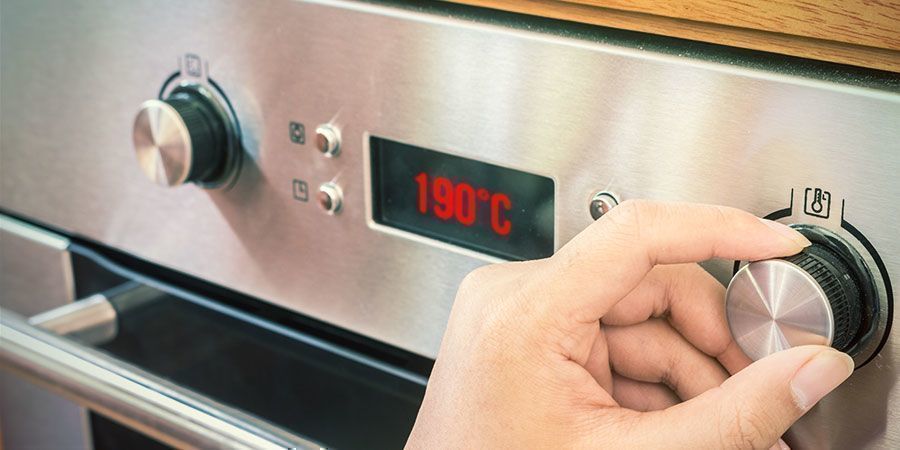
Too much heat destroys the sensitive compounds in weed. This is also why you want to decarb (see above) cannabis slowly and at a low temperature. When you cook or bake edibles using extreme heat, it will not only destroy the potency of your dish, but the flavour (terpenes) as well.
Alongside forgetting to decarboxylate, cooking edibles at high temperatures is the main reason your edibles will turn out meagre in potency. There’s nothing worse than realising you scorched all the goodness out of your cannabis-infused delicacy.
![]() Solution: Stay under 190°C
Solution: Stay under 190°C
Don’t expose your weed to temperatures higher than 190°C. This shouldn’t be an issue, as this will be sufficient for most recipes. Don’t fry your weed in a pan, as this will be way too hot. When it comes to baking, opt for “lower and slower” recipes that stay well below the degradation threshold.
4. Forgetting To Add Water When Making Cannabutter
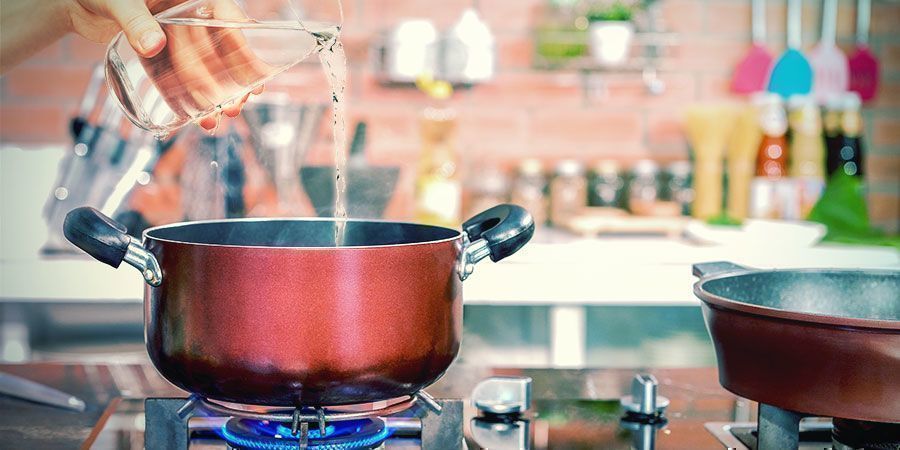
Some people make cannabutter with just weed and butter, but water keeps the temperature down and the butter from burning. Without water, high temperatures will destroy the heat-sensitive compounds in the cannabutter. Water also flushes out some of the unwanted green colour and makes it so your cannabutter doesn't taste like grass.
The good thing is, adding water won’t reduce the potency of your edibles. Cannabinoids will bind to the fat, and ultimately you’ll remove the layer of water from the hardened butter, leaving behind only the good stuff.
![]() Solution: Use an equal ratio of water to butter
Solution: Use an equal ratio of water to butter
When making cannabutter, use the same ratio of water to butter. If you want, you can also use slightly more water. As you’re making your cannabutter, watch your pot closely. If you see the water evaporating or the butter reaching 120°C degrees, add more water. A cooking thermometer will be helpful!
5. Grinding Your Buds To Dust
Pretty much any ordinary weed grinder makes it easy to grind down your buds. But this also means that one can easily overdo it and grind their flowers way too fine.
Although grinding weed does increase its available surface area, when cooking edibles, this isn’t really a good thing. Mostly, it’s just unnecessary and will result in a much greener and grassier taste—and your edibles won’t get more potent.
![]() Solution: Stick with a medium grind
Solution: Stick with a medium grind
Try to achieve a medium-coarse grind much like dried oregano. When grinding, do a few rounds and check the consistency as you go. If you want to increase potency without reducing the quality and flavour of your edibles, consider adding some kief from the bottom chamber of your grinder. Just know that it should be added toward the end of the cooking/baking process as kief is very vulnerable to degradation by heat.
6. Not Straining Cannabutter Properly
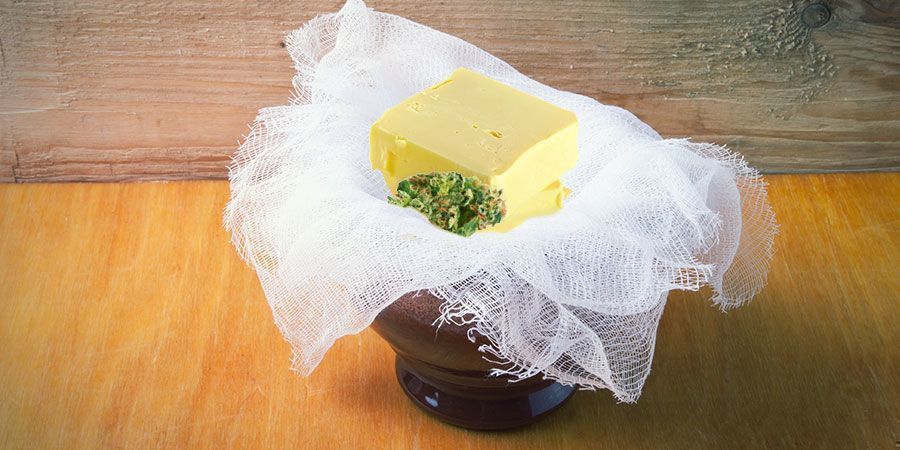
You could spend hours cooking the best cannabutter only to screw things up with improper straining at the end. Some folks squeeze their butter through the cheesecloth “to get everything out”, but this will only impart more bitterness and plant material into your end product.
Another mistake is to use an unsuitable strainer that’s not fine enough. This will allow large particles of plant matter to find their way into your butter—not good.
![]() Solution: Use cheesecloth and let it strain by itself
Solution: Use cheesecloth and let it strain by itself
When straining your edibles, use a fine, good-quality cheesecloth, or at least an ultra-fine sieve. Just pour your cooled cannabutter into it and let it strain by itself. Don’t squeeze or push to get more out; just wait. The taste will be better and the butter will be just as potent. You don’t need all that chlorophyll and other unsavoury stuff.
7. Not Mixing Your Edibles Recipes Thoroughly
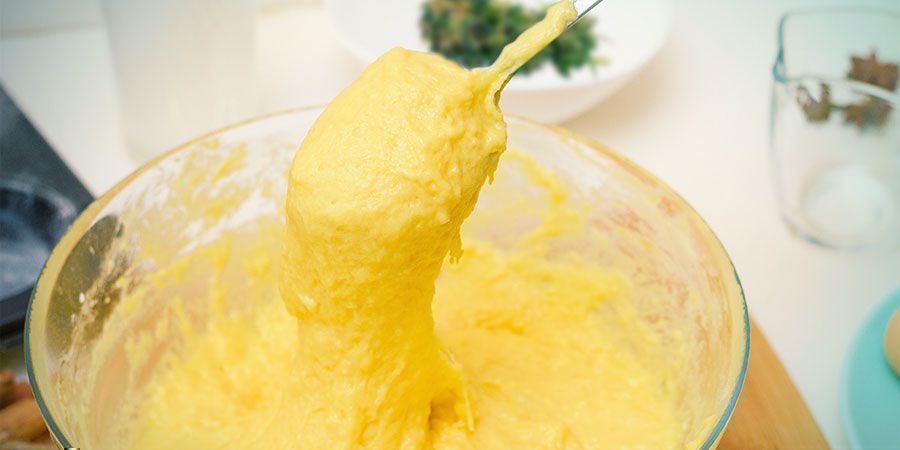
Another mistake when cooking with weed is not mixing thoroughly. This is an all-too-common mistake in "regular" cooking too. Have you ever eaten a biscuit with a chunk of baking powder in the middle? Not enjoyable. The same can be said of THC.
If you give your butter a lazy swirl when you add your weed, the potency of each dose will be extremely inconsistent. Some of your cookies may turn out crazy strong, and others may not have any effect. In either case, no one will be happy. The same can be said when adding your cannabutter into your chosen recipe.
![]() Solution: Distribute evenly, mix thoroughly
Solution: Distribute evenly, mix thoroughly
Don’t skimp when mixing your recipes. The little extra time you spend stirring will make a big difference in the final product. Get a suitable utensil for the job and don’t rush. This way, you can avoid unpleasant surprises when dosing.
8. Limiting Yourself To Baked Edibles
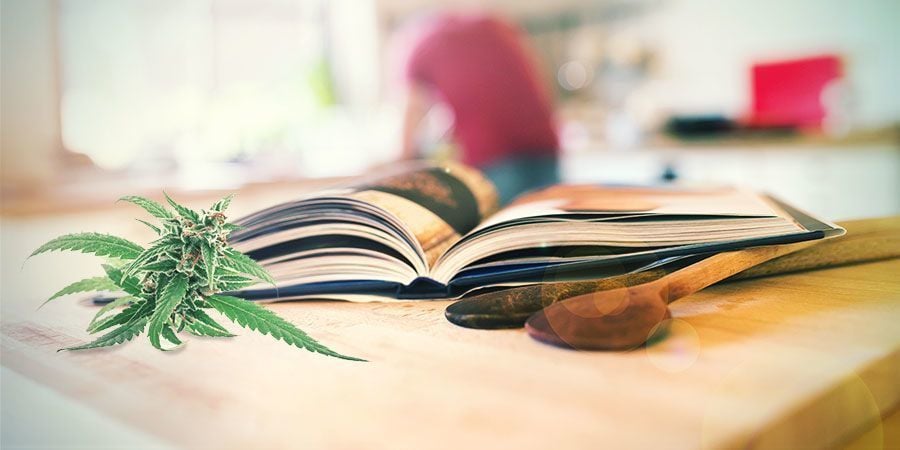
When most people think of edibles, they picture brownies, cookies, or similar baked goodies. But cannabis edibles can be so much more! From gummy bears and chocolate bars to smoothies and six-course dinners, there is a whole lot of edible goodness to discover.
Why not impress your fellow weed connoisseurs with an appetiser, entrée, dessert, and cocktail infused with cannabis? You can take your hosting to new heights with a classy cannabis soirée!
![]() Solution: Explore the wide world of edibles recipes
Solution: Explore the wide world of edibles recipes
Don’t limit yourself to just baking. If you look around on the internet, you will find a ton of great edibles recipes. You can also get cannabis cookbooks. What’s more, you don’t even need to be an expert to make many of these recipes yourself. If you know how to make cannabutter, you can use it to infuse a variety of dishes! See our article on The Top 10 Best Cannabis Recipes to get you started!
9. Eating The Entire Batch Instead Of Testing A Small Portion
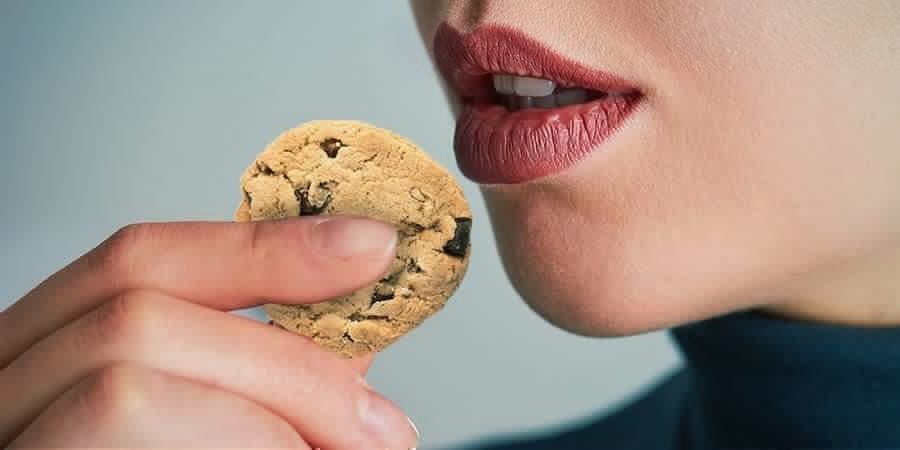
Eating too much and getting way too high is hands-down the biggest rookie mistake people make with edibles. The reason for this is that folks who are new to edibles often don’t know what to expect. Someone may not feel anything after eating a cookie and thus proceed to eat more. Big mistake; in about 45 minutes, they’ll be flying sky-high.
You must wait a sufficient amount of time—up to two hours in some cases—before you can accurately gauge the effects of a given dose. The thing is, consuming edibles is very different from smoking. The high is often interpreted as stronger, and the effects are certainly longer-lasting.
![]() Solution: Start low and wait up to 2 hours for the edibles to kick in
Solution: Start low and wait up to 2 hours for the edibles to kick in
If you’re taking edibles, don’t go back for a second helping until you feel the effects of the first. If you’ve obtained edibles from a dispensary, stick with the recommended dosing instructions. Start low and don’t be impatient. Know that your edibles will kick in sooner or later, as long as they’ve been properly decarbed.
10. Spending Too Much Money On Cannabis Just For Edibles
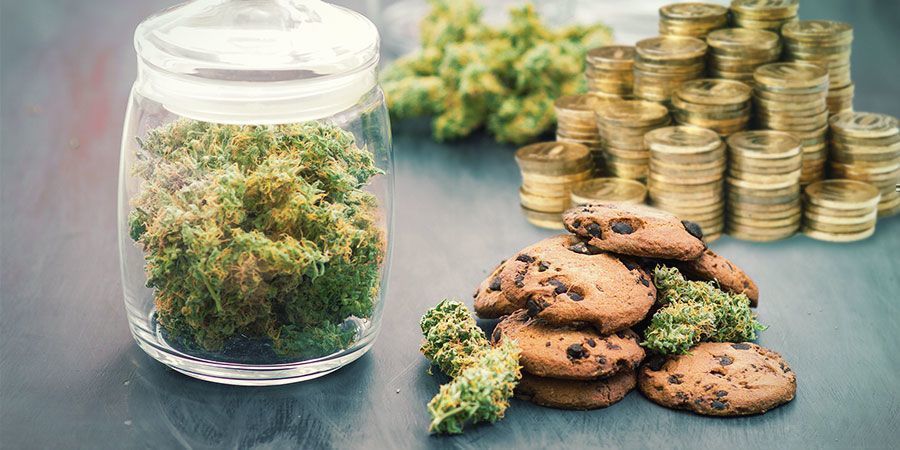
No question, cooking with weed is awesome, but this doesn’t mean you need to waste your best bud (and therefore your money) when making edibles.
When you make cannabutter or other bases for edibles, you’re really just concentrating the cannabis compounds in the fat. This means you can use buds and even sugar leaves and trim to make edibles without sacrificing on quality. By the time all is said and done, you can turn a bag of trim into a huge stash of edibles.
![]() Solution: Use shake, trim, leaves/stems, and already vaped buds
Solution: Use shake, trim, leaves/stems, and already vaped buds
Shake, trim, leaves, and even stems are perfect for making edibles. If you tend to vape weed, you can even reuse your AVB (already vaped buds) in your weed kitchen. So, rather than wasting money on weed to make edibles, you can save your cash (and stash) by using leftovers. Save your prime bud for smoking!
Bottom Line: Cooking Cannabis Edibles Takes Patience And Practice
With these tips, you will be well on your way to making tasty edibles that deliver the effect you are looking for. Remember, just as with anything else, patience and practice are the keys to perfection!
-
 4 min
16 April 2021
How To Make Cannabis-Infused Olive Oil
Cannabis-infused olive oil is simple and straightforward to make, and it tends to last much longer than other edibles. Add it to soups and sauces or baked goods and bruschetta! Read on for a guide...
4 min
16 April 2021
How To Make Cannabis-Infused Olive Oil
Cannabis-infused olive oil is simple and straightforward to make, and it tends to last much longer than other edibles. Add it to soups and sauces or baked goods and bruschetta! Read on for a guide...
-
 7 min
5 November 2019
Everything You Need To Know About Cannabis Edibles
Cannabis edibles offer a completely unique way to enjoy weed. However, taking edibles can be intimidating, especially if you are new to it or have had a negative experience. Luckily, ensuring a...
7 min
5 November 2019
Everything You Need To Know About Cannabis Edibles
Cannabis edibles offer a completely unique way to enjoy weed. However, taking edibles can be intimidating, especially if you are new to it or have had a negative experience. Luckily, ensuring a...
-
 4 min
10 September 2013
Top 10 Best Cannabis Recipes
Today, more and more people are using marijuana for various reasons. For the love of weed to the amazing benefits it offers to people dealing with chronic pain, incorporating cannabis into certain...
4 min
10 September 2013
Top 10 Best Cannabis Recipes
Today, more and more people are using marijuana for various reasons. For the love of weed to the amazing benefits it offers to people dealing with chronic pain, incorporating cannabis into certain...












 United States
United States

